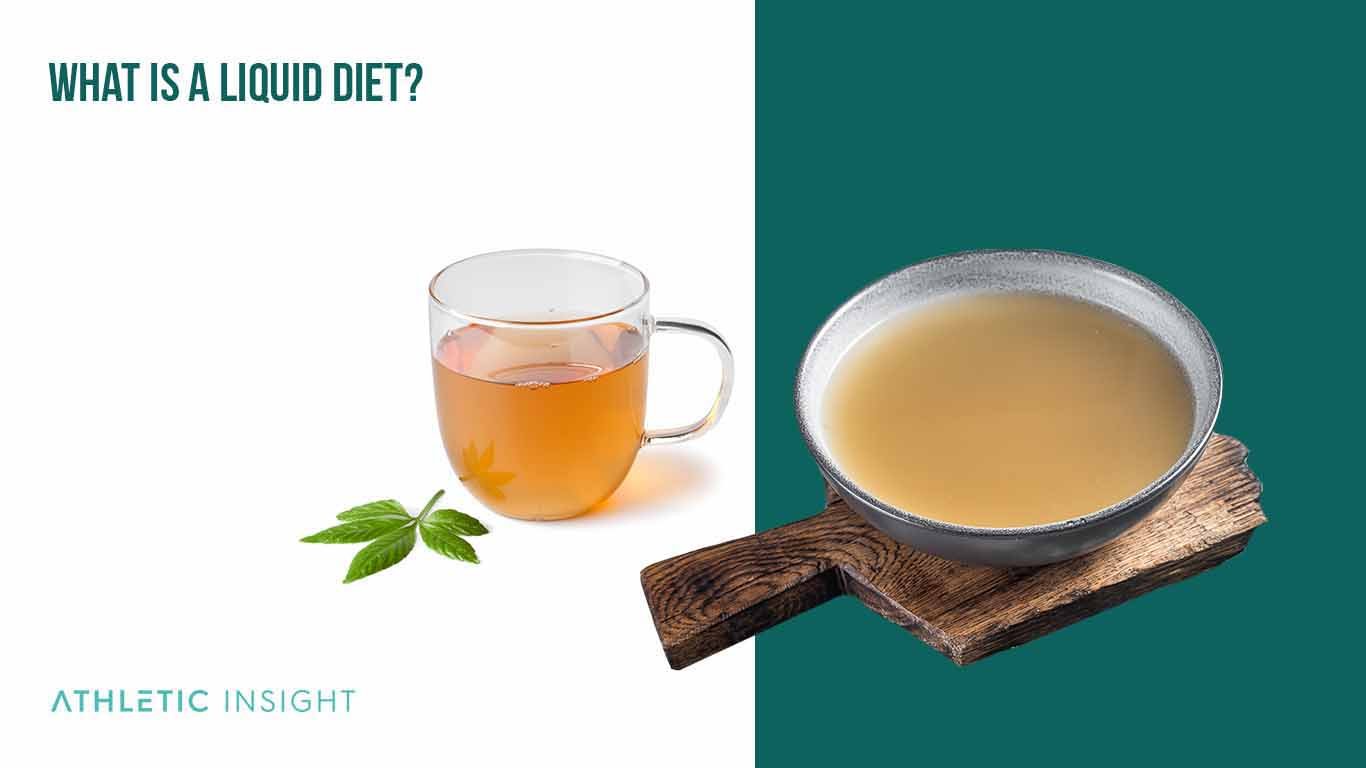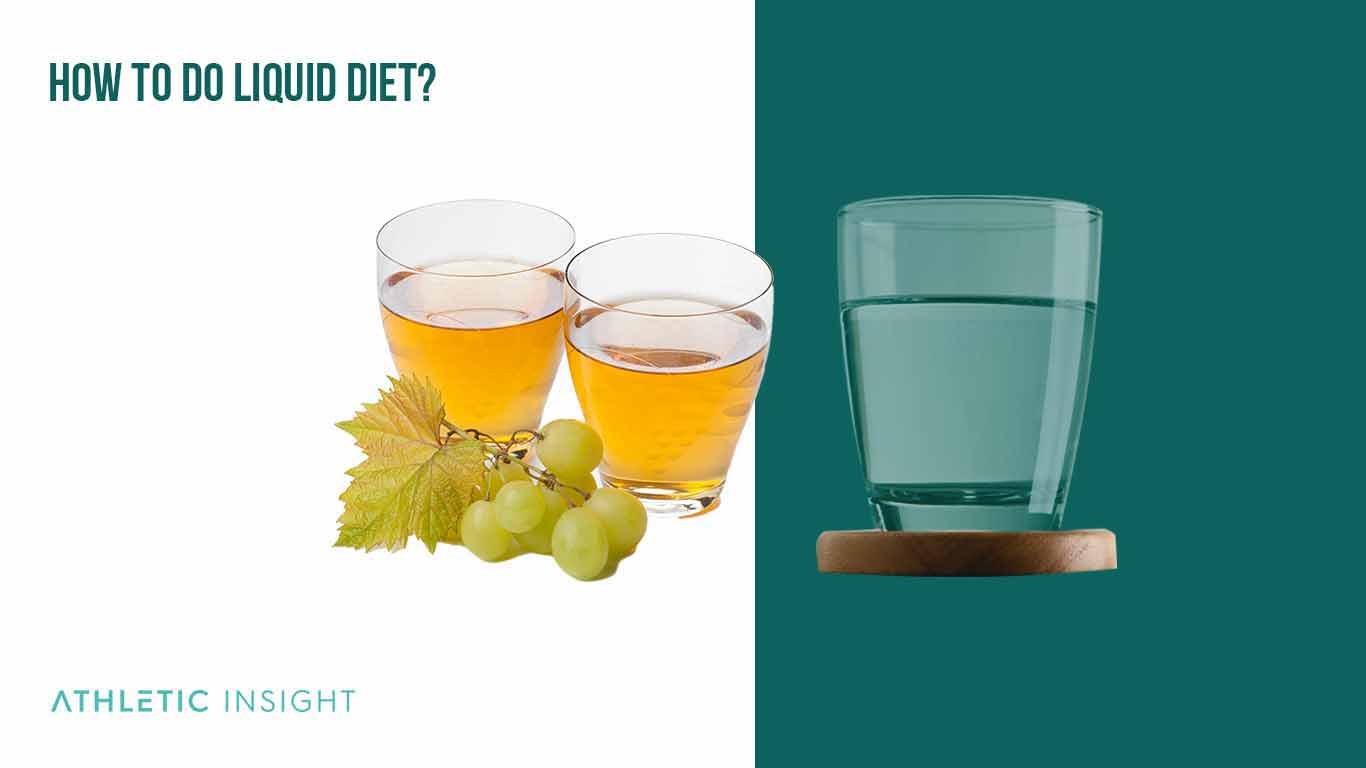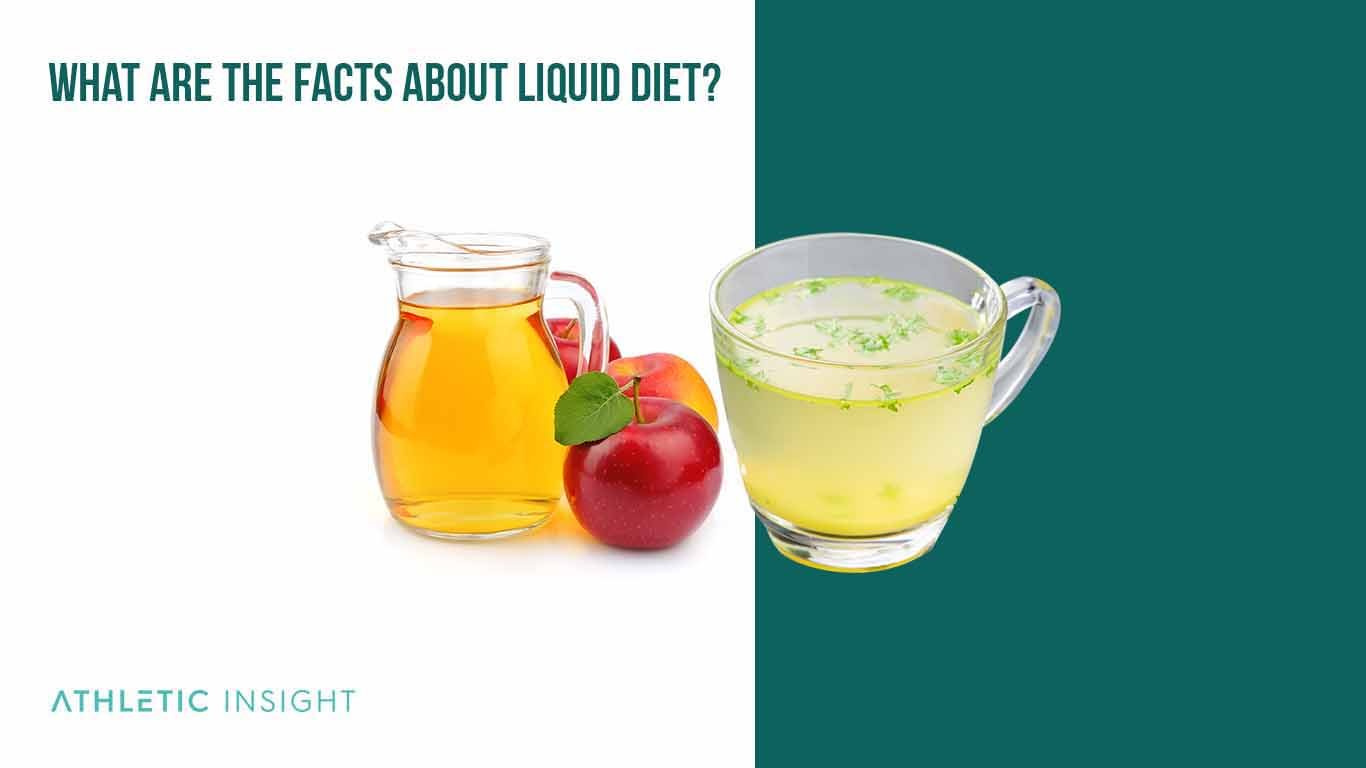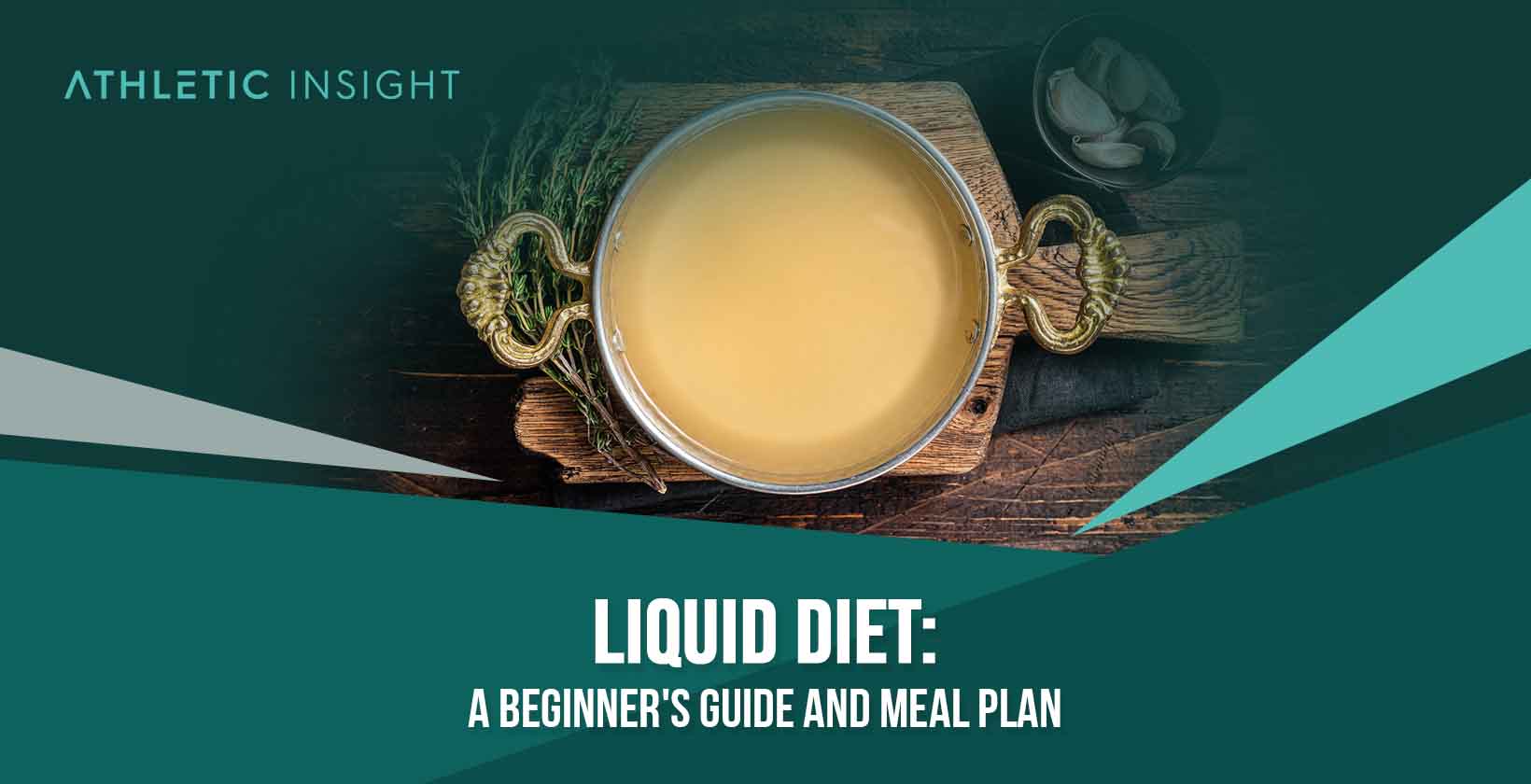Weight loss is one of the most common goals for beginning a diet or exercise regimen. However, making the right changes to achieve this goal is difficult. It can be even more challenging to find the right type of diet, given the number of options available on the market. One of the most popular weight loss diets people turn to is the liquid diet.
The liquid diet is a weight management plan that involves substituting entire meals with beverages. There are two main types of liquid diets: a clear liquid diet and a completely liquid diet. Only clear liquids such as water, tea, and broth are allowed on a clear liquid diet. In contrast, a full-liquid diet includes all beverages, such as smoothies and shakes.
The liquid diet is effective for weight loss because it limits caloric intake and eliminates sugary and fatty foods often included in unhealthy diets. It also helps to cleanse the body, improve digestion, and reduce inflammation. Liquid diets can benefit those suffering from chronic illnesses like diabetes and heart disease.
If you consider the liquid diet a potential option for your next weight loss program, please keep reading. This article will cover everything you need to know about this diet. By the end of the article, you will know if this diet is the solution for your weight loss needs.
What is a Liquid Diet?
A liquid diet is when a person only consumes liquids, such as juices, smoothies, and soups. This diet plan has become increasingly popular in recent years due to its potential health benefits. Many people use liquid diets for short-term weight loss or detoxification purposes. Nonetheless, liquid diets can be advantageous for those with digestive issues or who require additional sustenance from an ailment or harm during recuperation.

A liquid diet is a regimen that only ingests liquids and foods blended into an easily drinkable consistency, which includes shakes, smoothies, broths, vegetable juices, nut milk, and more. These foods provide essential vitamins and minerals without the added bulk from solid food sources like grains and legumes.
The potential benefits of a liquid diet are plentiful, ranging from weight loss due to reduced caloric intake to improved digestion since liquids pass through the body quickly. You can also boost your energy levels as your body can absorb nutrients more rapidly, and mental clarity may improve since heavy meals do not weigh you down.
Hydration is improved when taking in adequate fluids, nutrients are absorbed more quickly due to the liquid form, and it’s gentler on your digestive system, so there’s less chance for stomach discomfort or distention after eating large portions. In short, this type of diet can provide numerous advantages that make it worth considering.
In summary, when followed correctly, liquid diets can be an effective and safe weight loss or health maintenance approach.
How does Liquid Diet Work?
A liquid diet is an eating plan where you only consume liquid food, including anything from meal replacement shakes to clear liquids like fruit, vegetable, pureed, or fat-free broth. Before beginning a liquid diet, it is crucial to consider several factors.
A liquid diet reduces the number of calories taken while furnishing essential nourishment to sustain energy and well-being. Eating solid foods needs to be broken down in the digestive system before your body can absorb them.
However, when consumed in liquid form, it bypasses much of this process and is quickly digested and absorbed into the bloodstream, which means fewer calories are needed to provide energy for your body’s daily activities.
One significant benefit of a liquid diet is that it can help you lose weight quickly. Many people overeat when eating solid foods due to hunger cues from sight or smell rather than actual hunger signals from their bodies.
A potential drawback to a liquid diet is that it may cause tiredness or headaches from insufficient fiber and other necessary nutrients, usually found in whole foods. Those with difficulty swallowing should consult their doctor before considering any long-term dietary change, as consuming only liquids could make it challenging to get adequate nutrition over time.
Introducing liquids slowly over several days is best, giving the body time to adjust to the new dietary changes and preventing stomach issues or discomfort. Begin with clear liquids such as water, broth, herbal teas, and juices without added sugar. After a few days, gradually add smoothies and shakes.
Replacing liquid meals with a balanced diet with adequate protein and other nutrients is essential. Various ingredients, such as fruits, vegetables, and nuts, can be added to smoothies. Protein powder or Greek yogurt can also boost the protein content.
Drinking plenty of water and other beverages on a liquid diet is crucial. Dehydration can cause fatigue, nausea, and headaches which could ultimately lead to quitting the diet. Taking multivitamin supplements will also help ensure the body gets all the nutrients it needs.
Finally, it is vital to end the liquid diet gradually. After achieving the desired weight loss goal, slowly reintroduce solid foods into one’s diet. Ending the diet slowly allows the body to adjust and prevents unwanted side effects.
It is vital to consult a doctor before beginning the liquid diet. You should be especially careful if you are pregnant, nursing, or with existing medical conditions. A doctor can guide how to properly and safely implement the liquid diet.
What are the health benefits of a Liquid Diet?
A liquid eating regimen is a dietary arrangement that includes taking most of your sustenance as fluid. You can use a liquid diet for weight loss, detoxification, or pre-procedure preparation. While some potential health benefits are associated with following a liquid diet, it’s essential to understand the risks and how to do it safely before starting one.
- Weight Loss Benefits of a Liquid Diet: For those looking to lose weight quickly, replacing solid foods with liquids may help reduce calorie intake and jumpstart weight loss. However, this isn’t an effective long-term strategy since the body needs essential nutrients in solid foods like proteins and healthy fats. Research has demonstrated that individuals who pursue low-calorie regimens may recover lost weight when they return to consuming ordinary suppers.
- Improved Digestion with a Liquid Diet: Since liquids move more quickly through the digestive system than solids, many people find drinking their meals helps relieve symptoms associated with digestive issues such as bloating and indigestion. A complete liquid diet, which consists only of beverages considered “liquid,” such as juices, smoothies, and meal replacement shakes, can also give your digestive system time to rest if you’re dealing with an illness or injury involving your gastrointestinal tract.
- Increased Energy Levels with a Liquid Diet: Replacing solid foods with drinks made from fresh fruits and vegetables can provide essential vitamins and minerals needed for energy production without adding extra calories from fat sources like butter or oils commonly used in cooking recipes online. Eating nutrient-dense liquids instead of heavily processed meals can also make you feel lighter throughout the day while providing enough fuel for physical activities like exercise or sports practice. Consuming liquids may bring various advantages, such as slimming down, better digestion, and more energy.
What are the health risks of a Liquid Diet?
There are a variety of health risks associated with the liquid diet. For example, if the liquid diet is not nutritionally balanced and only consists of liquid substitutes, it can lead to deficiencies in essential vitamins and minerals.
Restricting solid food for prolonged periods can lead to dehydration, fatigue, and depression. A liquid diet is unsuitable for some people, such as pregnant, breastfeeding, or those with chronic health conditions. Therefore, it is always essential to consult a doctor before beginning the liquid diet.
How to do a Liquid Diet?
When following a liquid diet, planning your meals ahead of time is essential. Ensure your diet contains nutrients by picking nutritious liquids such as veggie and fruit juices, low-fat milk, or meal replacement shakes.

It would be best to consider incorporating recipes online or in cookbooks featuring pureed fruits and vegetables for added variety. To stay satiated longer, consider incorporating fiber-rich items such as oatmeal or applesauce into your liquid diet. Ensure adequate hydration while on a liquid diet by consuming sufficient water throughout the day.
Staying Hydrated While on A liquid diet
Staying hydrated when following a liquid diet is essential because fluids help move food through the digestive system more efficiently. Hydrating drinks include clear liquids such as fat-free broth or apple juice, plain gelatin desserts, and sports drinks with electrolytes added for extra energy and minerals.
To prevent dehydration, consume beverages that provide much-needed calories and replace the solid foods absent from your diet.
While on a liquid diet, you need to monitor your calorie intake carefully. It would help if you did not surpass the recommended daily calorie intake for your body type and gender. It is also essential to take note of the serving size when consuming liquid meals and ensure it fits within your daily caloric goals.
If you are trying to stay in a caloric deficit, a man should not consume more than 2,000 calories, and a woman shouldn’t drink more than 1,500 calories while on a liquid diet. Since the liquid diet is restrictive, you must carefully monitor how long you are on a diet. Short-term liquid diets should not exceed two weeks.
What are the foods that you can eat while on a Liquid Diet?
When on a liquid diet, you should always choose nutrient-dense liquids. Nutrient-dense liquids include low-fat or plant-based milk, unsweetened juice, freshly-made smoothies or shakes, clear broth soups with vegetables, bone broth, herbal teas, clear liquid diet supplements, and sugar-free jello. It would be best if you ate nutrient-dense liquids to maintain your calorie intake and nutrition.
What are the foods that you should avoid while on a Liquid Diet?
While on a liquid diet, you should avoid high-calorie and sugary drinks such as soda, sweetened tea, coffee, sports drinks, and alcoholic beverages. You should also avoid processed foods such as chips, candy, and cookies, as these are high in calories and lack essential nutrients.
Who should do Liquid Diet?
The liquid diet may be an excellent option for individuals looking to lose weight healthily. It can be an effective and safe weight loss plan with the correct implementation. Remember that it is always essential to consult a doctor before dieting.
The liquid diet is not for people with diabetes since a lack of solid food can cause blood sugar levels to become too low. The liquid body-building diet is not popular because it does not have the calories to maintain muscle mass.
What are the reasons that make people do Liquid Diet?
People may choose to do a liquid diet for a variety of reasons. Some people may want to reduce their calorie intake to lose weight, while others want to ensure they get the proper nutrition needed for a healthy lifestyle. Individuals who have digestive issues may choose to do a liquid diet to give their digestive system a break.
Who are the people who need to do a Liquid Diet?
The only people who need a liquid diet are those whose doctor assigned them the diet.
What are the Best Recipes for a Liquid Diet?
These are the five best recipes for the liquid diet
- Blended oatmeal with whole milk: Blending oatmeal is a great way to keep your breakfast quick and filling.
- Creamy tomato soup: Adding cream to your tomato soup will up the calorie content and help keep you full.
- Vanilla protein shake: Vanilla protein shakes are a great way to add protein to your liquid diet.
- Bone broth: A good bone broth is essential for a liquid diet.
- White bean and tomato soup: This soup is flavorful and full of protein and fiber.
What is a Sample Liquid Diet Plan?
This liquid diet plan menu is a sample of what you eat weekly.
Day 1
- Breakfast: 1 cup of cereal with whole milk and a cup of fruit juice
- Lunch: Yogurt and two cups of soup with fruit juice and chocolate pudding
- Dinner: Blended oatmeal with whole milk, two cups of vegetable soup, and ice cream
Day 2
- Breakfast: Meal replacement shake and a cup of whole milk
- Lunch: Bone broth, jello, and meal replacement shake
- Dinner: Bone broth, meal replacement shake
Day 3
- Breakfast: Sliced fruit and a protein shake
- Lunch: Fruit juice, bone broth, and soup
- Dinner: Blended oatmeal with whole milk, ice cream, and a banana
Day 4
- Breakfast: Banana nut breakfast smoothie
- Lunch: Creamy vegetable soup and milk
- Dinner: White bean and tomato soup
Day 5
- Breakfast: Peanut butter and jelly yogurt bowl
- Lunch: Two cups of tomato soup, chocolate pudding
- Dinner: Lemonade, two cups of chunky vegetable soup
Day 6
- Breakfast: Blended oatmeal and fresh fruit
- Lunch: Bone broth and banana pudding
- Dinner: Cream of mushroom soup
Day 7
- Breakfast: Cereal with whole milk and fruit juice
- Lunch: Jello, fruit juice, and ice cream
- Dinner: Two cups of blended vegetable soup, fruit juice, and yogurt
What are the facts about Liquid Diet?
These are five critical facts about the liquid diet.

- You must carefully monitor a liquid diet to meet all your nutritional needs.
- It is essential to consult with a healthcare professional before starting a liquid diet.
- A liquid diet provides insufficient calories or protein for body-building.
- The liquid diet is not recommended for those with diabetes due to the risk of low blood sugar levels.
- The liquid diet can effectively lose weight quickly.
How long does a Liquid Diet last?
Most liquid diets last between five to seven days. The five-day liquid diet weight loss results are good if you stick to the diet. The weight loss result is much more excellent if you complete a 7-day liquid diet.
Is Liquid Diet considered a healthy diet?
Yes, the liquid diet is healthy. Generally, a nutritious and assorted eating regimen that includes entire nourishments like organic products, vegetables, proteins, and good fats gives fundamental supplements for ideal well-being.
Liquid diets may be beneficial in some instances, but they are not suitable for sustained nutrition; hence, consulting a healthcare provider is recommended to decide if this diet suits you. Ultimately, consulting a medical professional can help determine if this dietary plan is suitable.
Is a Liquid Diet diet recommended for people who undergo Colonoscopy?
Yes, a liquid diet is recommended for people who undergo Colonoscopy. It helps clear the digestive system of any solid food particles which may make the procedure difficult and uncomfortable. You should follow a liquid diet for 1 to 3 days before the Colonoscopy. It is essential to drink plenty of fluids to replenish the nutrients and electrolytes lost during this period.
Is the Liquid Diet done before surgery?
Yes, you can do a liquid diet before certain surgeries. The purpose of the liquid diet is to reduce the number of calories and fat in the body. Reducing caloric intake helps to reduce the risk of complications during surgery, such as increased bleeding and slow healing.
Is the Liquid Diet done after surgery?
Yes, a liquid diet is beneficial after certain surgeries. After the surgery, a liquid diet can help provide necessary nutrients while relieving the digestive system from having to digest solid food.
What is the Recommended Timing for a Liquid Diet?
Generally speaking, an average healthy adult with no underlying medical conditions could likely sustain themselves for up to two weeks without serious side effects or adverse health consequences.
However, it would be best if you did not remain solely on a liquid diet for more than this period, as essential nutrients may be lacking in such diets. Long-term use of these types of diets may lead to nutrient deficiencies and other associated issues over time.
What are the Types of Liquid Diets?
There are three main types of liquid diets; clear, complete, and blended. A clear liquid diet consists of water, fruit juices without pulp, clear broth, and sugar-free drinks such as ginger ale and sports drinks. Full-liquid diets include milk, cream, custards, smoothies, strained soups, and ice cream. Lastly, blended liquid diets have a combination of solid food and liquids.
What is the difference between a Full Liquid Diet and a Clear Liquid Diet?
The main difference between a full-liquid diet and a clear-liquid diet is that the full-liquid diet allows for more caloric intake because it includes foods such as milk, cream, custards, smoothies, and ice cream that are calorically dense. Clear liquid diets can be more difficult to sustain due to their lack of calories and nutrients.



